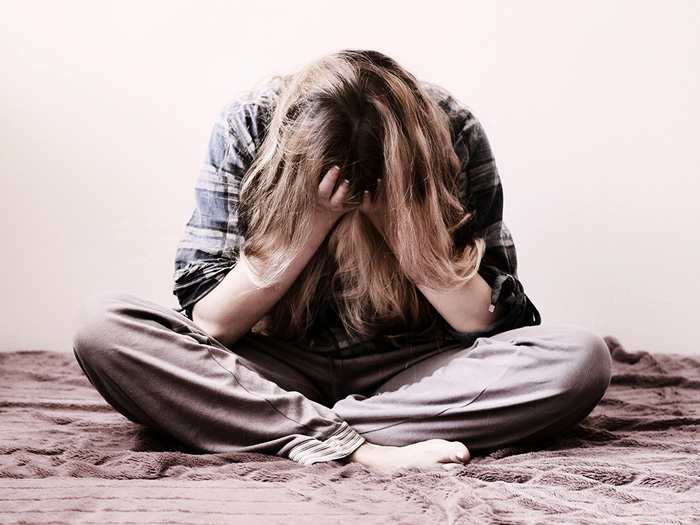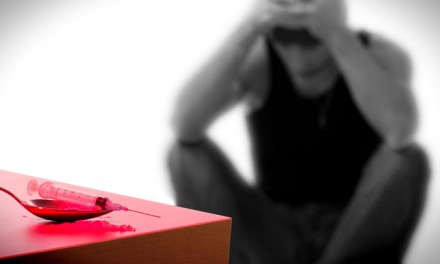Many aspects of addiction put people at higher risk for suicide: impulsivity, isolation, hopelessness, warped perceptions of reality, and low self-esteem.
Not only do these personality factors overlap between addiction and suicide, but there is also research backing up the connection: “Individuals with a substance use disorder are almost 6 times more likely to report a lifetime suicide attempt than those without a substance use disorder.” While mental illness is the first risk factor for suicide, substance abuse also holds hidden risks of suicide.
Using substances not only influences a person’s likelihood of suicide, but it can also become a means of suicide. An article from Psychology Today explains a direct correlation between alcoholism and suicide and notes that drug poisoning is responsible for 75% of suicidal deaths.
There are unspoken stigmas about addiction and suicide that greatly contribute to the growing suicide rates: “Over 40,000 people die by suicide each year in the United States” (NIMH). As is the case with substance abuse, these stigmas can be defeated by raising awareness. In an effort to overthrow stigmas and resist the connection between addiction and suicide, this article will show how to prevent suicide by disproving some of its myths and recognizing its symptoms.
Common Myths About Suicide
Myth: Suicide is a cowardly, easy way out. It is an overreaction to commonplace life events, an act of revenge.
Fact: Suicide is a response to depression and a possible combination of mental illnesses and other factors. Just like addiction, mental illness is not a choice but a biological disease (Aviary, NIMH). It is insensitive and incorrect to place moral blame on someone whose perception of the world is so warped by mental illness that they wholeheartedly believe that suicide is the only answer. And if a natural impulse like revenge did contribute to their decision, they cannot be held accountable for not being able to dismiss an irrational thought due to the state of their mental health.
Myth: Only white teenage males die by suicide.
Fact: Suicide does not discriminate. It is a cause of death that afflicts every single demographic: age, gender, race, sexual orientation, economic status, religion, etc (AAS). Even if some groups of people have higher rates than others, the possibility of someone dying by suicide is present for anyone with a history of depression and/or mental illness.
Myth: Suicide is an attention-seeking call for help.
Fact: Now this is not necessarily a myth, but it is important to clarify that those who attempt suicide are not seeking attention in an egotistical, conceited way; they are seeking attention in a life-dependent, survival way. If a person was close to dying from starvation and called out for some food, they would not be brushed off as “selfish.” Suicidal people are just as desperate and close to death as a starving person; unfortunately, they are less likely to receive the help they need to live another day.
Myth: Suicide is unpredictable.
Fact: There are many symptoms of someone contemplating suicide, and these signs are the first, tentative cries for help. Sometimes someone’s mental illness is so deeply ingrained or they are so caught up in suicidal myths that they cannot acknowledge their symptoms as cries for help. This makes it especially important that family members and friends recognize suicidal tendencies; intervention by loved ones is the most effective way to prevent suicide.
Recognizing Suicidal Signs (NIMH):
- Talking about suicide or death: People who are suicidal may talk about wanting to die, about death in general, and about having no hope, purpose or enjoyment in living.
- Feeling extreme guilt and shame. People who are suicidal feel like a burden to everyone around them. They feel trapped and desperate, with no options or solutions.
- Feeling extreme physical or emotional pain. People who are suicidal may also experience manic mood-swings and/or extreme anxiety or irritation.
- People who are suicidal may display the following behavior changes:
- Using alcohol, drugs or other substances more often
- Isolation and withdrawal from loved ones
- Difference in eating/sleeping patterns
- People who are suicidal may do the following:
- Make or look for a plan of action to die by suicide (search online, stock pills, buy a gun)
- Make risky, careless actions and choices (abusing substances, driving too fast, etc)
- Give away or show disinterest in important possessions
- Say goodbye to loved ones
- Plan after-death arrangements or make a will
If You Recognize Any of These Symptoms (In Yourself or Someone Else):
Visit the Suicide Prevention Life Line or call 1-800-273-8255 immediately; they are available 24/7. If you are deaf or hard of hearing, you can contact the Lifeline via TTY at 1-800-799-4889 or the Crisis Text Line: 741741 (NIMH).
Again, if you recognize any of these signs or are having suicidal thoughts, please contact any of the above resources or at least reach out to a therapist, psychologist, doctor, rehabilitation center, religious leader, friend: anyone you trust. Especially if you are the witness to the symptoms, it is imperative that you take action, even if it feels overdramatic, or if you worry that you might be ‘crossing a personal line,’ or offending the person.
If you take action, the worst than can happen is the person does not need help and you both continue with your life. If you do not take action, the worst that can happen is that someone’s life will be forever discontinued.
In a TEDTalk, “The Bridge Between Suicide and Life,” Sergeant Kevin Briggs, a retired policeman who worked for many years on the Golden Gate Bridge, shares many moving and eye-opening experiences of his conversations with people attempting suicide at the bridge. His talks with these people convinced many of them to choose life. Sergeant Briggs shared another point as well: of the 1-2% of people who jump and survive, many of them said that the second they let go of the railing, they knew that they had made a mistake and wanted to live. This chilling observation, almost a voice from the other side, is especially powerful for people who are considering suicide and for those who have lost loved ones to suicide.
Addiction and suicide are some of the most difficult and incomprehensible tragedies; while addiction cannot always be prevented, suicide can be. More people than it is comfortable to acknowledge have been affected in some permanent way by addiction and/or suicide.
At the same time, these tragedies are never anyone’s fault; placing a burden of that magnitude on someone can never result in any good. But good can be done through preventative actions. Try to be aware of suicidal signs, to be kind, and to really listen to one another. And remember, suicide is never the only option–it should never be an option at all.
www.psychologytoday.com/blog/real-healing/201402/suicide-one-addiction-s-hidden-risks










